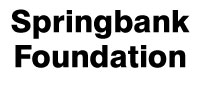Fuel used in iron making in the 1800s. It is a hard compound of water, mineral impurities, volatile gases, and carbon. It replaced charcoal as fuel for iron making. It can be found in eastern Pennsylvania.
Bituminous Coal
Fuel used in iron making in
the 1800s. It is a soft compound of water, mineral impurities, volatile gases,
and carbon. It replaced anthracite coal as fuel for iron making. It can
be found in western Pennsylvania.
Bloomery Forge
A water-powered mill where workers
heat iron ore and hammer it into small iron blooms, separating the iron from other
elements in the ore. Blooms are inferior to iron that blast furnaces or refinery
forges produce.
Charcoal
Fuel used in iron making until the
1840s. It is created by smoldering wood, removing water and impurities from
the wood, and leaving behind a nearly pure carbon.
Coke
The product after coal is heated and processed
to remove impurities from the natural resource. Coke makes iron making more
efficient than charcoal or natural coal.
Blast Furnace
A tall, chimney-like structure
in which a blast of hot air converts charcoal/coal/coke, limestone, and iron ore into
metallic liquid iron.
Refinery Forge
A mill where workers reheat
and hammer iron produced from charcoal-fueled furnaces, which is brittle and unmalleable.
This process removes carbon and impurities, creating a stronger and more malleable
wrought iron.
Rolling Mill
A site where sets of rolls squeeze
iron or steel into shapes for various products. Rolling mills replaced forges
in making iron products and are used for shaping steel products today.
Slitting Mill
The site where workers cut bars
of iron into strips, which are heated and passed through rollers to reduce them into
a desired thickness. The strips are then cut into slits.
Smelting
The process by which iron is extracted
from iron ore.



